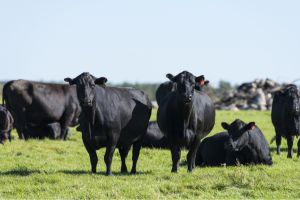17 blogs to write for your farm diversification business
Writing blogs for your website is one of the best and easiest ways to improve your online visibility for your farm diversification business. But we know coming up with ideas for your blog content can be tricky; it’s always harder to see what is interesting to your customers when you are the one doing it every day.
So, we decided to try and come up with 17 blog ideas that cover a whole range of farm diversification projects. Many of these can be tweaked to fit different setups and farm businesses, but not all of them will work for everyone.
What are the benefits of blogging for your farm diversification business?
 Why is blogging so useful for your farm diversification business?
Why is blogging so useful for your farm diversification business?
● It improves your online visibility so more customers can find you on Google
● It provides content that can be recycled and reused for other marketing channels such as social media
● It educates your customers about why they should buy from you and the type of business you are
● It allows you to encourage customers to try new things by removing or tackling “fears to buy”
● It gives you a platform to educate the general public and explain the value of farming in today’s world.
One of the best things you can do to improve the visibility of your website yourself is to create targeted blog content that is SEO-friendly. To make blogs SEO-friendly, you need to cover topics that resonate with your ideal client and match how they search for your solution or business online. You can use guesswork to do this, but we would always recommend having keyword analysis completed to have a clearer picture of the topics and phrases you should be focusing on. You will also need to make sure you understand how to upload blogs to your website and check the SEO settings while doing this. For WordPress sites, Yoast is a very easy way to make sure you have checked off all the SEO tasks during the upload process.
Why do we use numbers in our blogs?
You will notice almost all of the blog titles suggested in this article. This is for a good reason. Statistically, people are far more likely to click on a blog which is in a list format or has a number in the title. Depending on your industry, it is up to 7 times more likely that someone will click on the blog if it has a number in the title.
The choice of number is also important. Human psychology means we are more likely to engage/notice some numbers over others. Prime numbers such as 3, 5, and 7 are top of this list but 10 also ranks well, as do odd multiples of 7, such as 21 and 35. For most blog content, I would try to stick to 3, 5, 7, or 10 as any more than that and it can become too long or the quality of the content will drop which has a negative impact on SEO ranking.
Using numbers can also be helpful if you are not a keen or confident blog writer as it can help to focus your thoughts and encourage you to complete sections of the blog like a checklist, making the process less painful.
Blogs that promote local and British produce
There is currently a huge trend towards buying local or buying British. This is particularly true in the food and drink industry. We also have increased demand from consumers to better understand where their food has come from. These two trends make a perfect source of content ideas for your blogs. Some examples might be:

10 reasons why you should buy local produce
Or
5 reasons British beef is the best in the world
You can also extend this topic by adding seasonal eating ideas. Seasonality in cooking is an increasingly prominent topic which has now moved from the hospitality industry and into people’s homes. However, many people are so far removed from farming and food production that it is hard to know what is really seasonal. For example, many people talk about how lovely spring lamb is and think that means eating it in spring but historically lamb season was more likely to be available in late summer or autumn once the lambs have grown on. An example of a blog that tackles this well could be:
"Seasonal Eating: 7 unusual vegetables to try this spring"
In this blog, you are encouraging people to try vegetables that are outside their norm but which are bang in season. This blog would work well for a market garden-style farm diversification, but it could also be tweaked to focus on what meat is in season. For those with estates, a game-focused option should work especially well.
Perfect blogs for food producers
If you produce food or drink for the direct-to-consumer market then blogs can make an especially large impact on your farm diversification business. Topics can range from education on production processes to seasonality and the pros and cons of different products. But one of the easiest and best blog ideas is recipes.
We often find that farmers, and often farmers’ wives, will have a store of fantastic seasonal recipes that they have used for many years. You can draw on these to create blog content. Recipes help to directly sell your produce by linking the recipe to a buy ingredients option, but they can also be used to encourage customers to try ingredients they are unsure about. We find this particularly useful for meat producers who want to get a better carcass balance as they can use recipes to teach their customers how to cook with less common cuts of meat or with offal. Blog ideas could be:
African goat’s head stew – nose-to-tail eating
Or
How to cook with lamb offal
Or
What are sweetbreads? How do I cook sweetbreads? And why is MasterChef obsessed with them?
As per the last example, it can be helpful to look at what less-common ingredients are getting airtime on prime telly. You often find in a given season of MasterChef or Great British Menu or similar shows that there will be an unusual ingredient which everyone suddenly seems to be using.
Blogs for your farm diversification that educate
Education is one of the key benefits of blogging for your farm diversification business. This can include educating customers so you make more sales, customers are easier to manage, or it can mean educating the wider public on issues facing British farming.
The number of programmes on TV about farming right now should tell you what a huge appetite the public has for education on the farming industry and particularly individual farmers. However, we also know that there is a huge disconnect between the general public and their food, so we have to remember that education is the key. One aspect of this is to educate people on how to make better food choices or at least to make more informed food choices. Examples of blogs which fit this idea include:
What does it mean to be “red tractor approved”?
Or
Is RSPCA Approved better than Red Tractor?
Or
How to check where your food is coming from
The other aspect of education that is important is about management methods. People broadly understand the difference between barn-kept, free-range and organic. This is mostly due to the huge campaigns surrounding egg production in the mid-2000s. But people have less concept of how this translates to other types of food production. And they are almost clueless on the differences between management practices that are better or worse from an environmental standpoint.
Therefore, there is an ideal opportunity to educate customers, and the wider public, on why you have made the management choices you have and what the benefits are for the environment, the consumer, and the crop/animal. Blog ideas could include:
What is mob grazing? And why do we use it for our beef herd?
Or
How can sheep farming benefit rewilding?
Or
Why we chose to produce [insert breed], a native/rare breed
If you run an agritourism or activity-based farm diversification, you can also use educational blogs but you will need to adjust the topics. Try to consider what frequently asked questions you receive and then develop those into blog titles. For example:
"Are alpaca walks good for your mental health?"
Blogs to help customers get the most out of your farm diversification
You may find there are common queries or misconceptions that customers have when engaging with your farm diversification business. One way to combat this is to have clear information for your customers to manage their expectations. This can include information about how products are packaged and shipped, or what the facilities are at your agritourism business. These questions can be covered as part of a frequently asked questions section on your website, but they can also form the basis of blog topics.
Think of this as your way to educating and preparing customers so they are as easy to deal with as possible for you. For example, if a customer knows what to expect in advance, they tend to enjoy the product/service more and give better feedback. Blogs in this topic area could include:
10 activities to do while visiting our farm park
Or
Top tips for having the best day at [insert business name/farm park]
Or
How accessible is our farm park? Can I come in a wheelchair?
Or
Do I need walking boots or wellies to go on alpaca walks?
If you find sitting and writing blogs hard, that is ok; not everyone is a natural wordsmith. But it does get easier the more you do it and the more you find your own voice. When we write blog content for clients, we normally write approximately 1000 words or a little more as we know this is an ideal length for customer engagement and keeping the search engines happy. But even a 500-word (about ¾ of a side of A4 in Word) blog that is quality content can help if you are new to blogging.
We offer a marketing coaching package where we can teach you to write blogs and help you come up with your content ideas amongst other benefits. Or we can even simply write blogs for you on a regular basis.
For more information please visit https://flamemarketingltd.org/
- Log in to post comments

